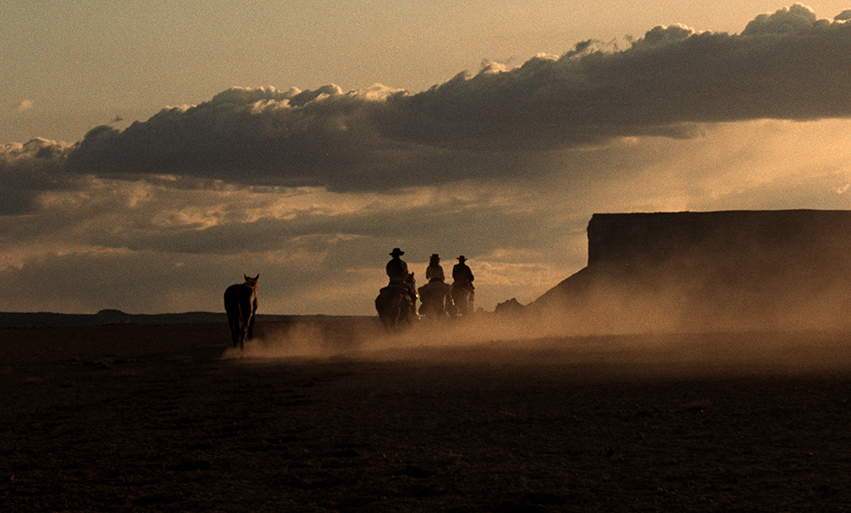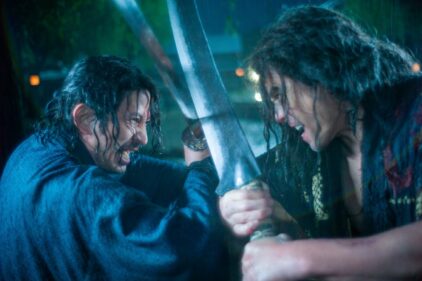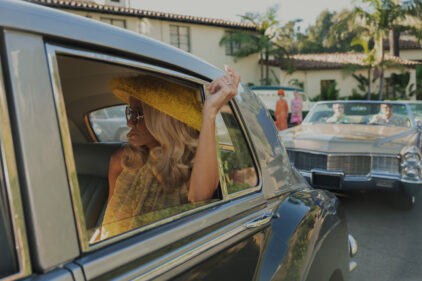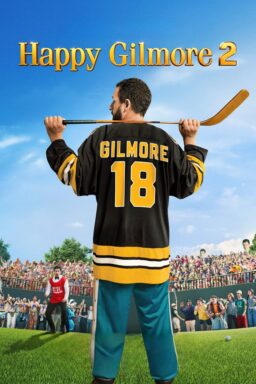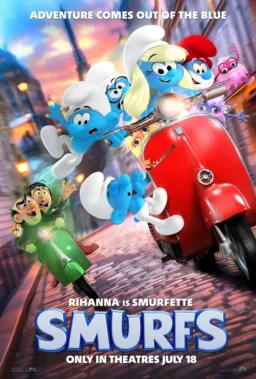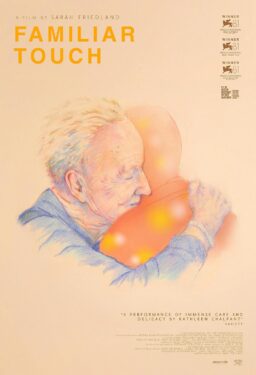The idea
of a movie that could be properly described as an existential western is so
inherently absurd that it sounds like the set-up to some kind of arcane joke
with the phrase “Go West, Jung Man!” in the punchline. After all,
there are certain things that one expects to find in a western—horses,
gunfights, sweeping vistas and the like—and the contemplation of one’s
existence is usually pretty low on that checklist. Even in the latter days of
the genre’s heyday, when the once-simplistic sagas of good guys and bad guys
gave way to films that critiqued the earlier approach while offering new levels
of psychological nuance, one generally did not see oaters that found their
characters wandering about aimlessly while trying to come to terms with their
place in the universe instead of the usual acts of derring-do. And yet, that
was the bold approach taken by Monte Hellman in “The Shooting” and “Ride in the Whirlwind,”
and the results, for the few that were lucky to see them, were two of the most
audacious examples of the genre ever produced.

The two
films were produced back-to-back in the Utah desert over the course of six
weeks in the summer of 1965 by a group of relative unknowns working under the
micro-budgeting aegis of legendary B-movie producer Roger Corman. Alas, due to
distribution snafus and the beginning of the general decline of the western
genre that they were both part of, more or less, the two films were barely shown
in America (though it is said that they did well in Paris). When an American
distributor did finally pick them up, they chose to immediately sell them to
television instead and even then, their broadcasts were few and far between and
via shoddy prints. When they would make rare appearances on television or as
public domain videotapes and DVDs, they were almost always due solely to the
fact that one of the key participants was a pre-stardom Jack Nicholson, who not
only co-starred and co-produced the two but also wrote the screenplay for
“Ride in the Whirlwind.” (If the notion of Jack Nicholson in a
western sounds odd to you, consider that even after he achieved stardom, he
turned up in “The Missouri Breaks” (1976) opposite Marlon Brando and
even directed “Going South” (1978)).
And yet,
despite being extremely difficult to see from almost the moment when they were
first released, the two films have each developed loyal cult followings over
the years—partly because of their unusual nature and partly because of the
later groundbreaking triumphs of many of the participants—and at long last,
they have received a proper home video presentation through a new Blu-ray
produced by Criterion. Both films have received a 4K digital resolution that so
thoroughly blows away the previous muddy translations that they hardly seem to
be the same movies, and each one includes commentary tracks featuring director
Monte Hellman, new interviews with such participants as Corman, co-stars John
Hackett, Millie Perkins and Harry Dean Stanton and assistant director Gary
Kurtz, and a video appreciation of the late, great Warren Oates conducted by
critic Kim Morgan. Considering that most fans of the films would have been more
than satisfied to merely have version of them that didn’t make their eyeballs
bleed when they tried to watch them, this set is an embarrassment of riches
that should hopefully go a long way towards putting them into the pantheon
where they rightfully belong.

As
“The Shooting” opens, one-time bounty hunter Willet Grashade (Oates)
returns to a remote mining camp after a long absence and finds his jittery
friend Coley (Will Hutchins) there with a story to tell. It seems that while in
the town of Winslow, Grashade’s brother, Coigne, got wildly drunk and
inadvertently trampled a young boy to death. Later at the camp, Coley overheard
Coigne arguing with his partner, Drum, that ended with Coigne taking off for
parts unknown and Drum being gunned down by an unknown assailant a few minutes
later. The next day, a mysterious woman (Perkins) appears at the camp and
offers Grashade and Coley a thousand dollars to take her to the town of
Kingsley for reasons that she refuses to divulge.
Grashade doesn’t like or trust her at all—she refuses to even tell
him her name and she shoots her own horse even though there is nothing
apparently wrong with it—but agrees to take her in the hopes that he can find
out what happened to Coigne along the way. Before long, they are joined by
Billy Spear (Nicholson), a hothead gunslinger who appears to be in cahoots with
the woman and who seems intent on goading Coley into a fight. Along the way,
there are enigmatic clues regarding both the woman and Coigne, brief and
terrible bursts of violence and a trek that ends up going nowhere before concluding
with a shocking turn of events.
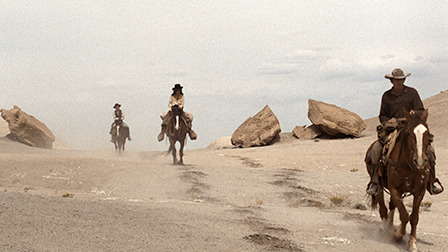
“Ride
in the Whirlwind,” on the other hand, begins as a trio of unassuming
cowboys—Wes (Nicholson), Vern (Cameron Mitchell) and Otis (Tom Filer)—find
themselves slightly lost in the middle of nowhere while trying to make their
way to Waco. Eventually, they stumble upon the remote camp belonging to one
Blind Dick (Harry Dean Stanton) and his men and wind up spending the night with
them. What they don’t realize is that Blind Dick & co. are outlaws wanted
for murder, kidnapping, horse theft and, most recently, the violent robbery of
a stagecoach. This only becomes apparent the next morning when they wake up to
find that the camp has been surrounded by a posse champing at the bit to string
up Big Dick and anyone who remotely seems to be associated with him.
In the
ensuing fray, Big Dick is lynched and his men are killed, along with Otis. Wes
and Vern manage to escape but now find themselves the targets of the posse who
just assume that they are part of the gang. The two wander the unfamiliar
terrain (at one point climbing up a mountain that goes nowhere) and eventually
stumble upon a farm owned by a couple and their daughter (Perkins), whom they
take hostage as they hole up and try to figure out an escape plan. While attempting
to steal a couple of the horses as they flee, they wind up killing the old man
before escaping with the two of them on one horse and with Vern wounded. As the
posse closes in on them, there is much irony in the fact that their efforts to
escape the unjust accusations against them have led them to do the very things
they were incorrectly accused of in the first place.
Although
the two films were written by different people—”The Shooting” was
scripted by Adrien Joyce, the nom de plume for Carole Eastman, who would go on
to write “Five Easy Pieces“—they have striking thematic similarities
that go far beyond the fact that they were produced virtually at the same time
and contain many of the same key participants. Both films involve hunts of an
enigmatic nature in which the participants are rarely certain of either who
they are hunting or why they are being hunted—regardless, the end result is
the same in both cases and it isn’t good. Both films feature characters who are
unlike the traditional types one normally finds in the genre—everyone is tough
and mean on the surface but confused underneath about who they are and what
they are doing. Both films feature quirky, hard-boiled dialogue that wouldn’t
sound out of place in an extremely fatalistic noir (Vern: “It’s peculiar
sitting here playing checkers while a bunch of men wait to string us up.”
Wes: “Why don’t you put a tune to it?”) Finally, both films find a
striking middle ground in their depiction of the violence that the characters
perpetrate on each other—neither the gore-free battles of the classic oaters
of old nor the ballets of blood of the sort to come from the likes of Sergio
Leone or Sam Peckinpah. Instead, the violence is short, nasty and
painful-looking—in other words, pretty much what it would be like in real
life.
For
anyone familiar with the career of cult filmmaker Monte Hellman, the
ambiguities and dark humor will come as no surprise. A one-time theater student
who apparently once staged a production of “Waiting for Godot” as a
western, Hellman came into the world of filmmaking through the world of Roger
Corman by helming such low-budget items as “The Beast from the Haunted
Cave” (1959) and the back-to-back war movies “Back Door to Hell”
and “Flight to Fury” (1964) and even serving as one of the many
directors who shot scenes for the infamous mishmash known as “The
Terror” (1962) in a desperate attempt to make sense out of it. After
“The Shooting” and “Ride in the Whirlwind,” he would go on
to make his most well-known film, the highly ambiguous road movie
“Two-Lane Blacktop” (1971), another tale of a chase that grows so
enigmatic after a while that not even the participants (including Warren Oates)
are clear as to what is going on—as with his earlier films, Hellman is far
more interested in character and mood than in a straightforward narrative.
Alas, as
this film was made for a major studio, such an approach did not go unnoticed
and when the film failed to live up to its hype, Hellman was bounced back to
the low-budget world where he worked sporadically on such intriguing films as
“Cockfighter” (1974), the oddball western “China 9, Liberty
37” (1979) and the recent mind-bender “Road to Nowhere. Among his
most unexpected credits—he served as one of the producers on “Reservoir
Dogs” and directed “Silent Night, Deadly Night III – You Better Watch
Out” (1989), a film which is infinitely more interesting than any film
entitled “Silent Night, Deadly Night III” has any right to be.
Although
to see that title become a part of the Criterion Collection would be one
for the ages, even it would hardly
improve on the sheer delight of the twofer of “The Shooting” and
“Ride in the Whirlwind.” If pressed to demonstrate a preference for one
over the other, I suppose that I would finally have to side with “The
Shooting” though that is less the result of any real deficiencies in
“Ride in the Whirlwind” and more because “The Shooting”
offers up the sight of the great Warren Oates (who would work several times
with Hellman over the years) in one of his first lead roles. Nevertheless, both
are astonishing films that play beautifully today and deserve to be considered
among the great latter-day westerns. Fans of old-fashioned westerns may be
perplexed by the ambiguities on display but anyone interested in seeing a
familiar genre approached in a wholly unexpected and endlessly intriguing
manner, this disc is a must.

